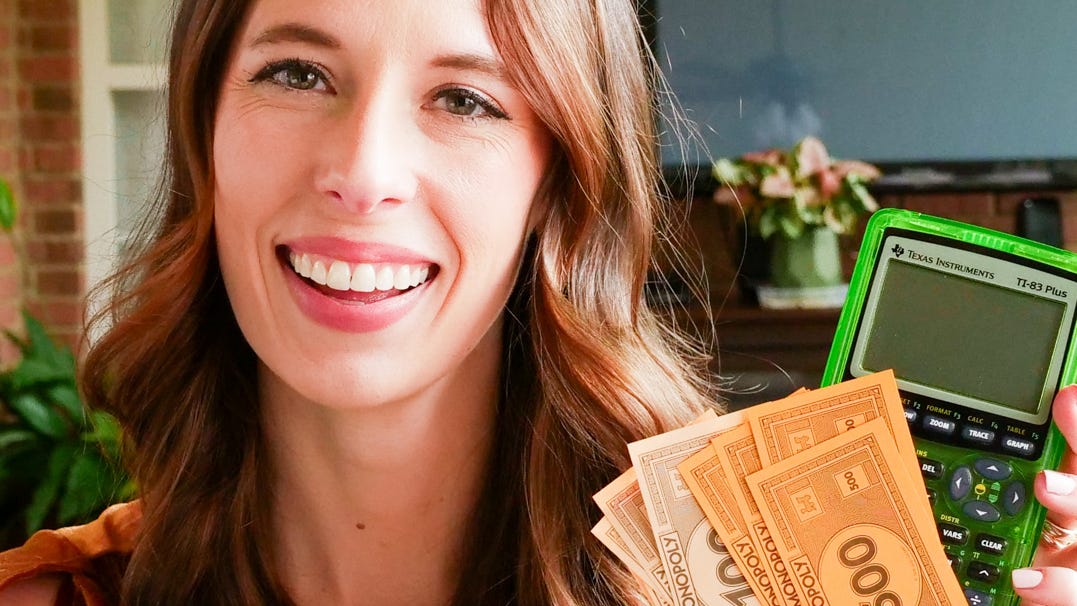'Idle cash': Most Americans are losing money on their savings. We can help.

The savings habits of many Americans give new meaning to the term “idle cash.”
More than half of American savers are earning less than 3% interest on their accounts, according to a new survey from Vanguard. One-quarter of consumers earn less than 1%.
Those interest rates matter, because of the frustrating math of inflation. Consumer prices rose 2.8% in the 12 months through February, and many observers expect higher inflation in the months ahead.
If your savings are earning less than 2.8%, and you adjust their value for inflation, you are probably losing money.
“In an inflationary environment, it is a sinful action not to get a strong return on your cash,” said Odysseas Papadimitriou, CEO of WalletHub, the personal finance site.
Savers struggle to keep up with inflation
Let’s say you park $1,000 in a savings account at an interest rate of 0.61%, which is today's national average, according to Bankrate.
Over the next year, at that interest rate, your savings will grow to $1,006. Consumer prices will almost certainly grow faster. At 3% inflation, an item that costs $1,000 now will cost $1,030 a year from now.
To keep pace with inflation, a saver must earn interest that matches or beats it. But many savers aren’t doing that, and the Vanguard survey is only the latest reminder.
The Vanguard analysis, published in March, found that 57% of consumers were earning less than 3% interest on their savings, while 24% were earning less than 1%. The survey reached a representative sample of 1,011 adults.
A survey published in 2024 by Bankrate found that two-thirds of savers were earning less than 4% interest.
Surveys by Santander Bank have found that only about 1 in 5 consumers are taking advantage of high-yield savings accounts.
“We find that high-yield savings is used mostly by high-income customers,” said Swati Bhatia, head of retail banking and transformation at Santander.
The average savings account pays about 0.5% interest
Across the banking industry, the overall average interest rate on a savings account has hovered around 0.5%, according to Bankrate, the Federal Deposit Insurance Corp. and other sources.
But many online banks offer savings accounts with interest rates of 3.5% to 4% or higher. Those rates have become standard on high-yield savings in the past few years in response to the Federal Reserve’s dramatic campaign of interest rate hikes to curb inflation.
Online banks can offer some of the highest interest rates in the industry because they have lower overhead costs than big brick-and-mortar banks, industry experts say.
“These accounts are literally within reach of anyone,” said Greg McBride, chief financial analyst for personal finance at Bankrate. “There’s over 4,000 banks in the country. You haven’t heard of them all.”
Openbank by Santander, a new digital bank, offers a high-yield savings account with 4.4% interest. Openbank has attracted $3 billion in deposits in less than four months. Opening an account takes “five minutes at most,” Bhatia said.
Americans have been slow to embrace high-yield savings
Yet surveys routinely show that American consumers have been slow to embrace high-yield savings. One reason is simple complacency.
“Many people keep their cash in traditional bank savings accounts, which often offer minimal interest rates, because they’re used to it. It’s what they’ve always done,” said Matt Benchener, managing director of Vanguard’s Personal Investor business.
Another reason: Savers aren’t used to high interest rates on bank accounts.
The Fed kept interest rates low for long stretches of the 2000s and 2010s, responding to the Great Recession and other economic shocks. Inflation was a non-issue through most of those years.
As a result, banking customers grew accustomed to reaping little or no interest on their savings.
“We forget that we can get more competitive interest rates on our bank accounts, because we used to get no interest on our bank accounts,” Papadimitriou said.
Consumers may be reluctant to open an account at an online bank. Changing banks can be tricky. Savers may feel their money is somehow safer in a big corporate bank.
On closer inspection, however, the high-yield savings accounts recommended by WalletHub and Bankrate are generally FDIC-insured, and opening an account is fairly simple.
“There’s a fundamental misunderstanding of how easy this is,” McBride said. “Nothing changes about your day-to-day banking. You’re just sending your savings somewhere it’s going to be treated better.”
A high-yield savings account isn’t the only way to beat inflation and earn real interest on your savings.
Vanguard offers a savings account alternative called Cash Plus, with an annual interest rate of 3.65%, as of early April.
Here are some other options.
Certificates of deposit
CDs spook some investors. In a 2023 survey by Forbes Advisor, 41% of Americans said they had never opened one.
When you open a CD, you agree to surrender your money to the bank for a set length of time. In exchange, the bank generally offers you a higher rate of interest than you might get with an ordinary checking or savings account.
As of April, competitive CDs are offering rates of 4.5% or better for a term of a year or less, according to Investopedia.
Papadimitriou, of WalletHub, said he has been talking up CDs, because their rates are fixed. Bank interest rates, by contrast, can change overnight.
“And so, increasingly, I’m telling people to get certificates of deposit,” he said. “You are not subject to the games that banks like to play.”
Money market accounts
Another alternative to high-yield savings is the money market account. They are offered by banks and credit unions, with federal backing.
Money markets “are another great savings vehicle,” said Vanguard's Benchener, but “many savers don’t understand how they work.”
Money market accounts combine features of savings and checking accounts, according to Investopedia. They can have high balance requirements, and their interest rates generally fluctuate.
Money market accounts were moribund through the low-interest years, but not today. Competitive rates can top 4%.